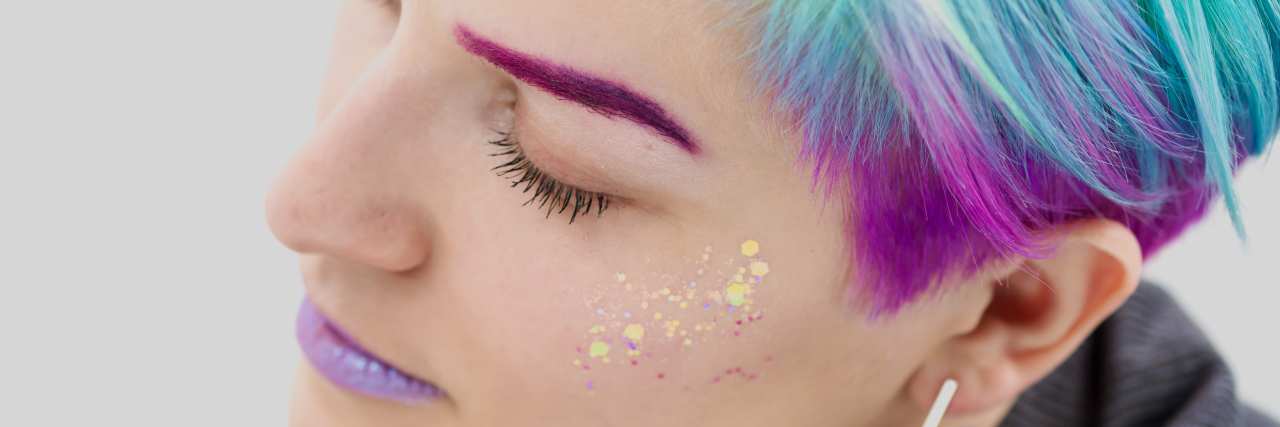How do people deal with having a chronic illness? Read my lips or say it with me: All. The. Ways. That’s how people do it. All the ways and any way they can. There is no right way or wrong way to do it, there is just making it through.
In Brené Brown’s bestselling book “Rising Strong,” she argues that at all times people are doing the best they can. This is a point my wife and I can go round-and-round about. She really gets stuck on the word “best.” She sees “best” as peak performance, as something very high-achieving. I don’t, I tend to agree with Brown. I think in most situations, however people are navigating, they are doing it in the only way they know how at that moment (with their skills, tools, resources, and experience) and therefore, it is the best they can do right then. And, given that orientation, people dealing with chronic illness, however they are doing it, are doing their best. For her, this is too permissive and lets people off the hook for bad behavior; for me, this allowance, this permissiveness gives grace.
Because chronic illness is many things — highs, lows, manageable, unmanageable, bearable, unbearable, there are as many ways to deal as there are things to be dealt with and people dealing. Here’s a run down of ways I deal.
- Stoicism – I learned this one from my mom and ancestors. Radical stoicism is like the unofficial religion of my people. Keep it in, tamp it down, be a martyr, don’t show how hard it is, make others comfortable, if you don’t have anything nice to say censor yourself, etc. These are the non-self-serving behaviors I learned that I am actively working to unlearn. It is, however, the primary way I used to deal.
- Self-pity – This one is generally my go-to when I get a new diagnosis, when I go into a relapse, or when I am taking hard news like a big event I’m missing out on or another such reminder of the ways my life is going so differently than I thought it might. Sometimes a three-day sad-fest is the only tool I can find in my tool belt.
- Numbing – Binging bad TV, Ben and Jerry’s, and “listening” to an audiobook during the five-hour drive home after getting bad news from my pulmonologist in Seattle (and not talking about it!) are three of my go-to numbing strategies when I am working to avoid a diagnosis, a loss, a new grief, or some other hard bit of information I’m not yet ready to process and metabolize.
- Acceptance – When I’m able to work around to something a bit healthier I can approximate this experience. What is true (and this was true even when I was given a terminal diagnosis) is that one can’t live her life in crisis mode. At some point, the business of just getting back to some form of living must happen. Acceptance, for me, is not the same thing as “giving up.” It is simply accepting what is.
- Empathy/Self-compassion – Here is the hard stuff: extending myself the same kind of love and support I would give someone else in the same circumstances. You know what I’m talking about here. We’d never say the mean stuff to someone else we reserve for ourselves. Here’s the thing: I’m so worth it! It’s a revelation. Self-compassion is transforming my life. If you need resources, look up the work of Kristin Neff, she can help.
- Feeling all the feels – One theory of autoimmune disease is that part of the trigger for these genes getting turned on in our bodies is the inability to express negative emotion. Sometime in our past our very tiny selves learned it wasn’t OK to express anger, or sadness, or fear, or some version of these and so we stuffed them. In the process, we metabolized those into sickness. OK, that is a tremendously short-hand version of what scientists think, but if it is at all intriguing to you, check out “When the Body Says, ‘No,’” by Gabor Mate. Having the whole range of emotions accessible to me is part of how I now deal better with being sick.
- Creativity – some people exercise, some people insta, I art. I’m a maker. Creating things large or small with my hands – whether that’s shaky calligraphy, knitting, writing a card, or putting together a collage heals my soul.
What about you? Do you think we’re all doing the best we can? Do you have other strategies that serve you? We all need a little help and your tip might be just the one we’re looking for.
This story originally appeared on Annette’s blog.
Getty image by Mikhail Spaskov.

